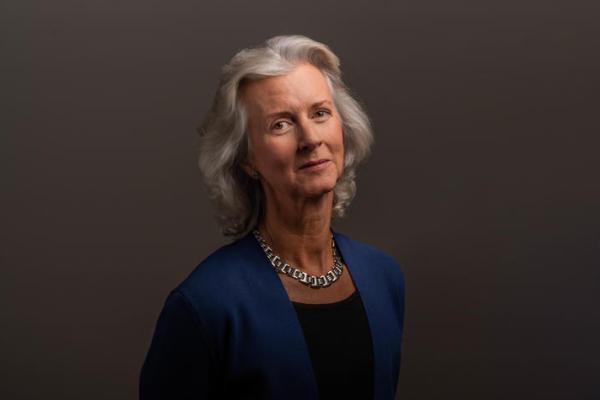College of Health Sciences Researcher Enjoys the Serendipity of Discovery
Esther Dupont-Versteegden, a researcher in the UK College of Health Sciences, uses her interest in the mechanics of movement to drive her research helping the aged retain skeletal muscle strength.
Esther Dupont-Versteegden thought she wanted to be a physical therapist. She had even been admitted into physical therapy school. But she took a slight change of course to pursue her interest in research.
"I've always been interested in how people move and how movement comes about," she said. "By using that skill I could contribute to the evidence with which physical therapists work."
Her curiosity has taken her in two divergent but equally interesting directions.
Her first focus is on changes in skeletal muscle and in particular muscle atrophy with disuse and aging. In other words: why don't the aged recover their muscle size as well as younger individuals do?
"Everyone needs a certain amount of muscle mass to get up out of a chair or to take a shower. We call that functional independence," she said.
"As we age, or after an illness where we've been bedridden, we lose some of that muscle, and recovery — or lack of it — is impeded by age. It's critical that we find the mechanisms by which this happens and look into ways to change that course."
Dupont-Versteegden has already been able to translate some of her insights into functional therapies. "A form of massage called cyclic compressive loading has been demonstrated to increase muscle size in laboratory animals," she said. "We are looking into targeting the force of the compression and/or the frequency of the treatment to maximize its effect, which would have terrific potential in an intensive care environment or a nursing home."
Her second focus explores the effects of cold on fat cells.
"We're currently investigating our assumption that lean people can turn a substance we call white fat into something called brown fat more easily than the obese," she said.
Because brown fat is burned without producing energy, she explained, learning how this change from white to brown fat occurs could have important implications for obesity and weight loss.
Dupont-Versteegden finds that the most fulfilling part of her work is the surprise that comes from unexpected results. "Quite often the data don't show what you thought you wanted to see, but those can be the discoveries where you start thinking about how this knowledge could be translated into something that's truly beneficial for the patient."
All researchers profess a love for learning, but Dupont-Versteegden's enthusiasm is infectious. "Every day I go home and think, 'I know more tonight than I did yesterday.' And that's a real privilege."
More from this series People Behind Our Research The scientists and scholars at the University of Kentucky are remarkable people. Some of them have a very personal connection to field they have chosen: a family member battling addiction or disease. Some of them began their journey based on curiosity. A drive to find out why the world works the way it does. What they all have in common is a passion to ignite progress and partner across fields and with communities to confront, head on, the most profound challenges. Research can do that, and our researchers tell you why and how. Subheading Why do we want you to meet our researchers?
Credits
Produced by Alicia P. Gregory, videography/direction by Chad Rumford and Ben Corwin (Research Communications).



